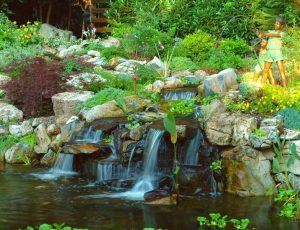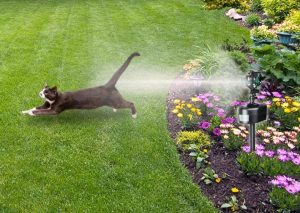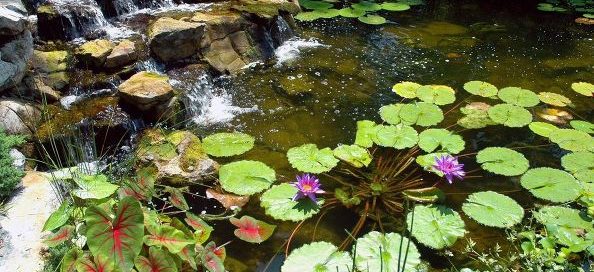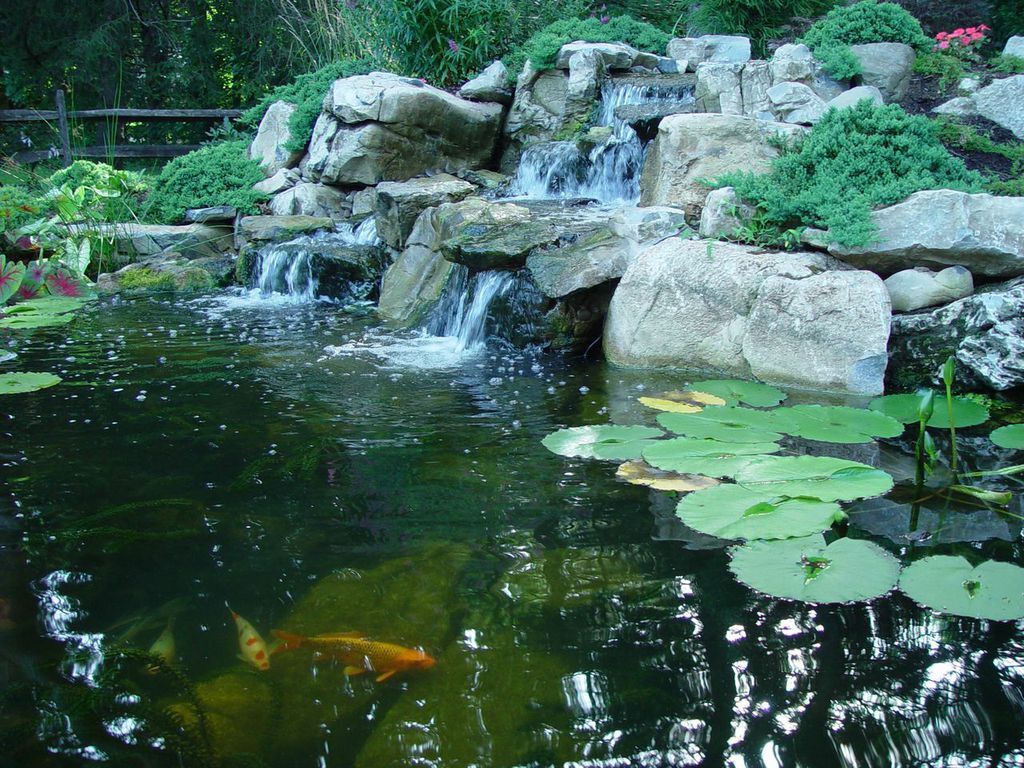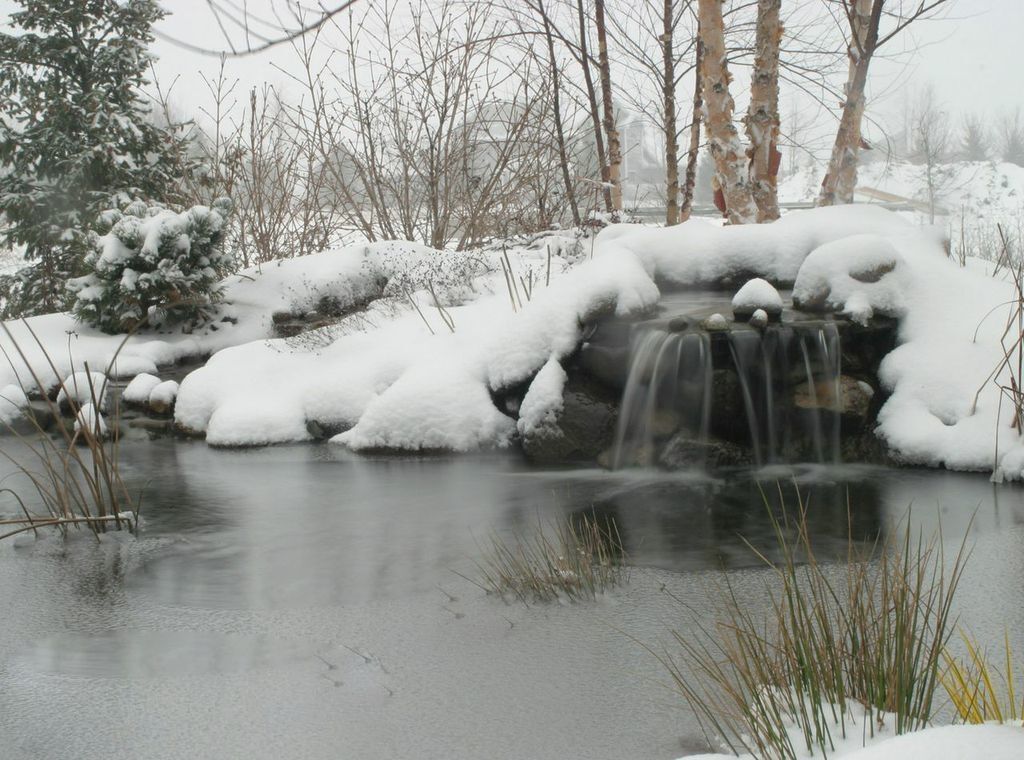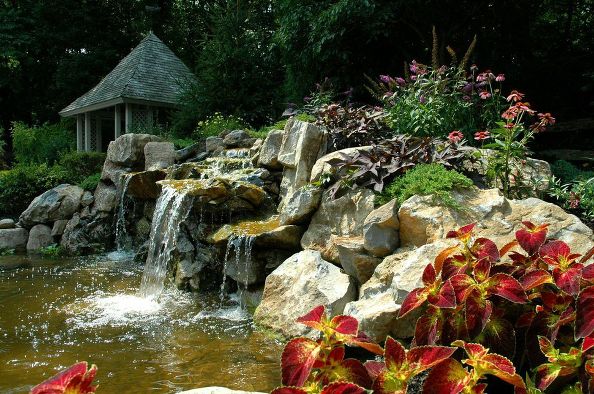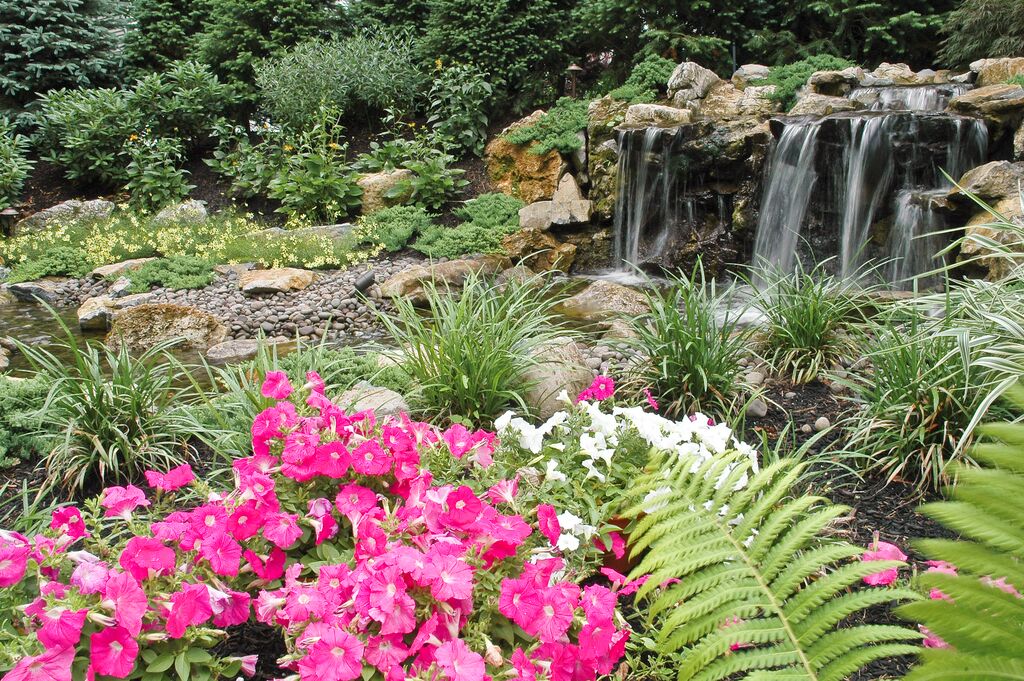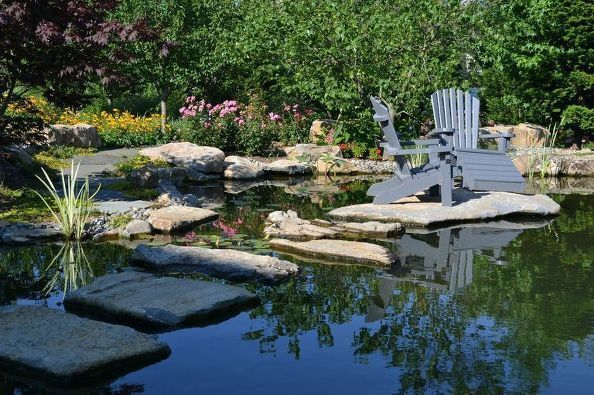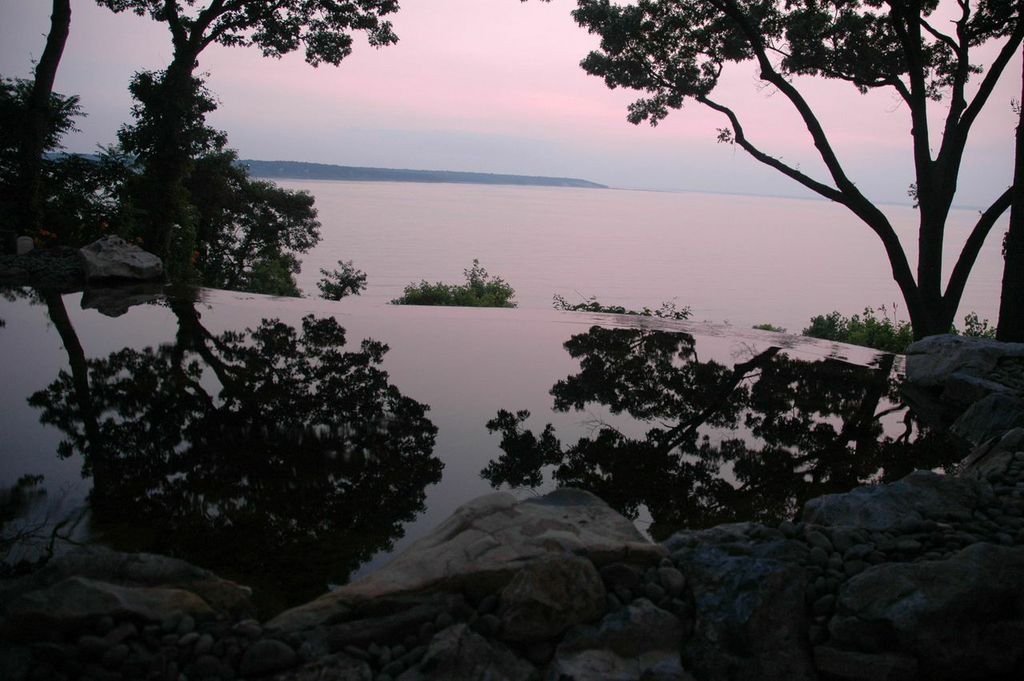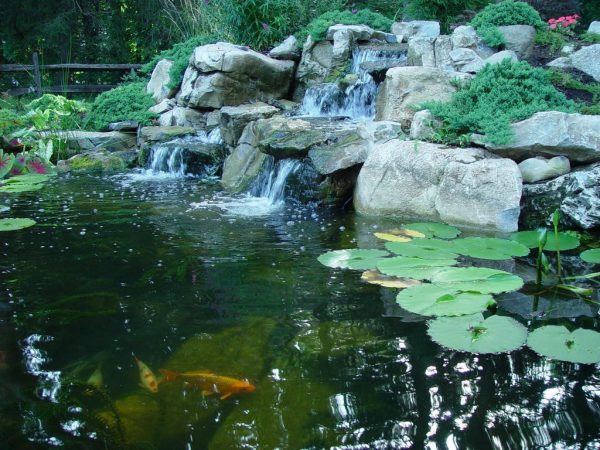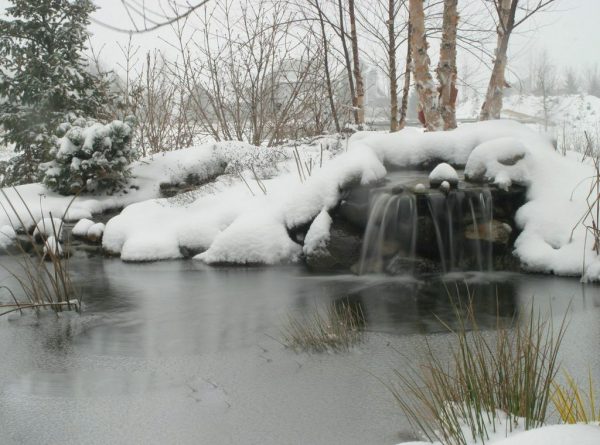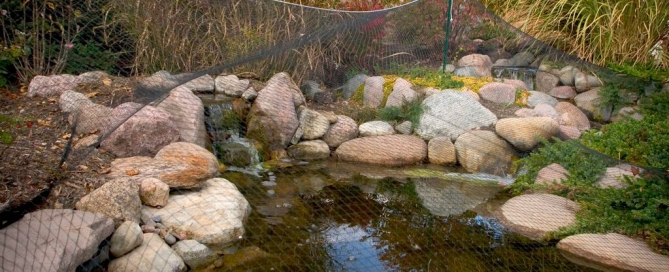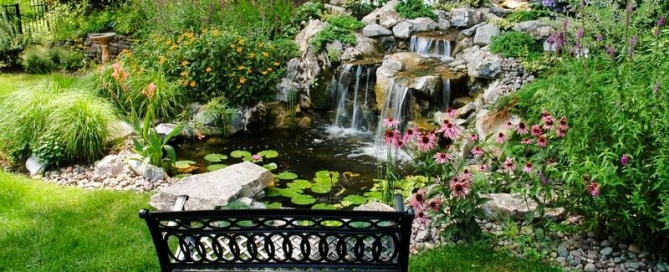How To Keep Pond Fish Safe from Other Creatures
First, Pond Fish Are A Good Thing!
When a pond water feature is well-designed-and-built, koi will naturally help balance the entire pond ecosystem.
However, many pond owners fear that the fish will be harmed or will not survive.
And while it is true that koi can be tempting to cats, raccoons, and herons, etc., there are precautions that will mitigate their attempts to reach your pond fish.
Adding koi castles and tunnels at the bottom of the pond will give fish a safe place to hide from many predators.
Include rock overhangs around the outside of the pond. This will, first and foremost, make any pond appear more natural while discouraging cats and raccoons from reaching into the water after the fish.
Planning a water feature with sufficient water depth can also dissuade raccoons and cats further, since neither enjoy swimming to get their dinner.
Plus deeper water at the edges (more than 18” deep) discourages heron wading.
Another helpful idea is adding a waterfall feature. The continuous movement of its water, or even water from nearby sprinklers, will put off many avian predators.
Other precautions koi pond owners can take is installing scarecrows, such as owl statues. A net will also work, but most pond owners prefer to limit net use to fall foliage season.
However, one particularly effective deterrent Deck and Patio has found is installing a motion-activated sprinkler.
Indeed, one gardening expert, the Laidback Gardener, agrees. After testing just about every animal repellent conceivable, he wrote in his blog last year:
“…the only simple deterrent that keeps most animals away in the long run is the motion-activated sprinkler.”
—Larry Hodgson, the Laidback Gardener
“At Deck and Patio, we believe that if you build your pond well, and install a motion-activated sprinkler, there really is no reason not to add koi to your pond,” says Dave Stockwell.
“And when using a motion-activated sprinkler, you might find it will drive unwanted animals away from your garden as well.”

Koi is a healthy part of this pond’s natural ecosystem; they have lots of room to hide as well as swim. The pond is sufficiently deep, including around the edges. There are also plenty of rock overhangs to discourage predators. Add a motion-activated sprinkler for the final bit of security, and you and there’s no reason to fear for your koi.
The feature photo at the top of today’s blog is artwork courtesy of the Laidback Gardener, Larry Hodgson.




